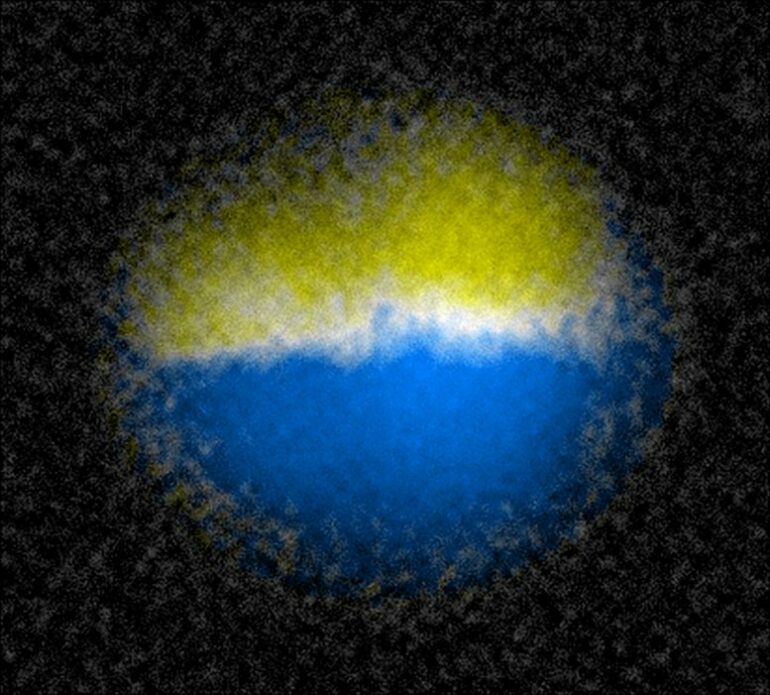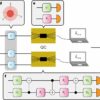University of Chicago scientists have been able to create a new kind of quantum object at will in the laboratory: “domain walls.”
The discovery can help researchers better understand exotic quantum particles—and could suggest avenues for new technology in the future, such as quantum electronics or quantum memory.
Published Feb. 2 in the journal Nature, the research was conducted in Prof. Cheng Chin’s lab, which studies novel quantum systems and the physics that underlie them. In one of their experiments, the UChicago scientists noticed an intriguing occurrence in atoms at extremely low temperatures. Under the right conditions, groups of atoms can segregate into domains, and a “wall” forms at the junction where they met. This domain wall behaved like an independent quantum object.
“It’s kind of like a sand dune in the desert—it’s made up of sand, but the dune acts like an object that behaves differently from individual grains of sand,” said Ph.D. student Kai-Xuan Yao, the first author of the study.
Scientists had glimpsed these domain walls in quantum materials, but previously, they couldn’t reliably generate and analyze them. Once the UChicago physicists created the recipe to make and closely study the walls, they observed surprising behaviors.
“We have a lot of experience in controlling atoms,” said Chin, who is appointed in the Department of Physics, the James Franck Institute and the Enrico Fermi Institute. “We know if you push atoms to the right, they will move right. But here, if you push the domain wall to the right, it moves left.”
These domain walls are part of a class known as “emergent” phenomena, which means that they appear to follow new laws of physics as a result of many particles acting together as a collective.
Chin’s lab studies these emergent phenomena, believing they can shed light on a set of laws called dynamical gauge theory, which describes other emerging phenomena in materials as well as in the early universe; the same phenomena likely held together the first particles as they clumped together to form galaxies, stars, and planets.
Breakthroughs in this field could also enable new quantum technology. Scientists are interested in cataloging these behaviors in part because they can become the basis of future technology—for example, the basis of modern GPS stems from scientists in the 1950s trying to test Einstein’s theory of relativity.
“There may be applications for this phenomenon in terms of making programmable quantum material or quantum information processor—it can be used to create a more robust way to store quantum information or enable new functions in materials,” said Chin. “But before we can find that out, the first step is to understand how to control them.”
More information:
Kai-Xuan Yao et al, Domain-wall dynamics in Bose–Einstein condensates with synthetic gauge fields, Nature (2022). DOI: 10.1038/s41586-021-04250-3
Provided by
University of Chicago
Citation:
Scientists create strange quantum ‘domain walls’ in laboratory (2022, February 11)



